I was fishing around in my box full of weird stuff, samples, leftovers, and that kind of thing, and among them I found this
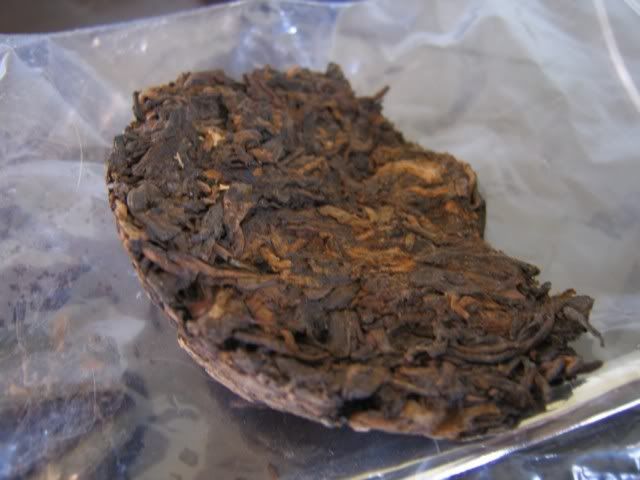
If I remember correctly, this is a sample from Aaron Fisher. I cannot for the life of me remember what this is, but sniffing it (and trying to get past the Lapsang Souchong induced smokiness — there’s a bag of LS next to it) I think this is a cooked puerh. I don’t know where it’s from. The shape is odd — there’s a sort of cylindrical shape to the original piece, I think, and this is just a small chunk of it.
I brewed it… and yes, this is probably a cooked puerh, although, it might be one of those older ones where there’s a bit of raw tea mixed in? Or stored differently? I don’t know. It is definitely a very good cooked puerh — soft, but robust, with a tinge of youth in there somewhere. It also does something that most cooked teas don’t — lasts very long, which made me think this is not cooked after all, yet there are so many things in the taste that remind me of a cooked pu. I don’t know. I should label my tea.

The wet leaves, as you can see, are dark, but not pitch black. They remain somewhat flexible. Aaron, if you’re reading this, do you remember what it is? My bad for forgetting…
A word about my tea service these days:

Trying to forego the tray was a bit of a tough decision. I remember when I first started using the tray, I found it liberating, beause I felt like I could do whatever I want and get away with it. Now, however, I found not using the tray makes me more disciplined in my brewing, and also, as a side benefit, conserves a bit of water. The large bowl serves as a kensui for the waste water. I might get a real kensui to sub in or this bowl, which I think should see more useful service as something else (fruit bowl?). Then again, I’m pressing the pewter bowl into service — that was originally a fruit bowl as well. In fact, other than the yixing pot, I think the only other things that are intended for tea in this setup are the chataku (the pewter cup holder) and the tray in the bottom.
Incidentally, tea works just as well (if not better) as Pledge in buffing up dark wood.
Update: Aaron just told me that this is probably from a 500g tuo from the 80s, one of those cooked puerh where the process of fermentation was incomplete or lightly done, so that they taste sort of raw-ish in the midst of the mostly cooked flavours. I think this came up when I was telling him about how I’ve seen people selling some 80s tuo that are obviously cooked as raw tea, and thus this tuo came into the picture….
Interesting drink, and thanks for the sample 🙂
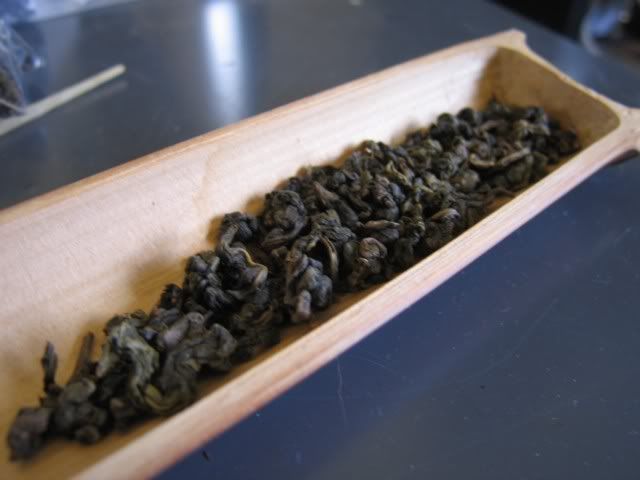
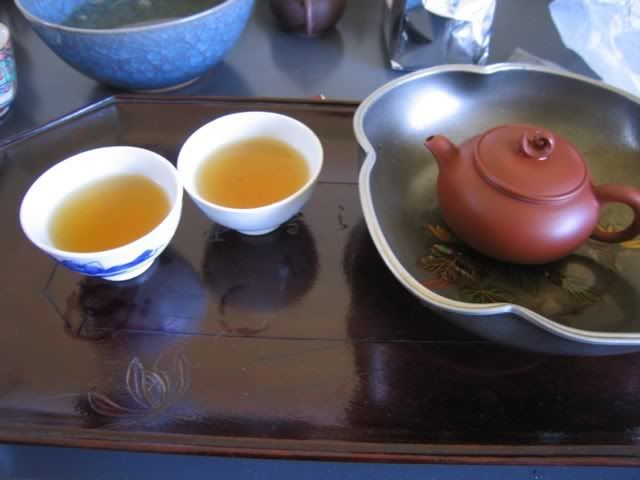
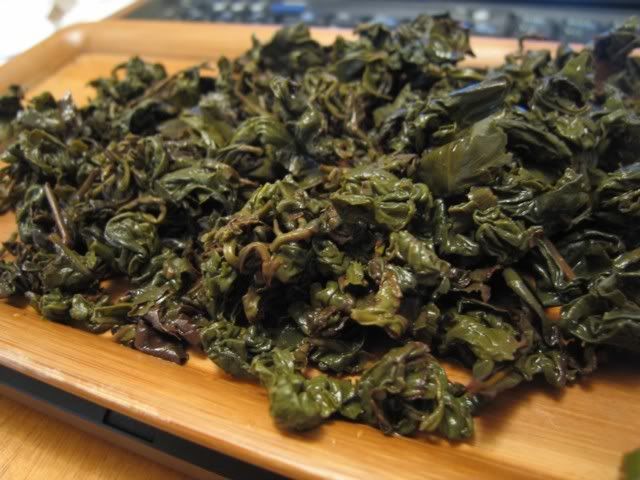

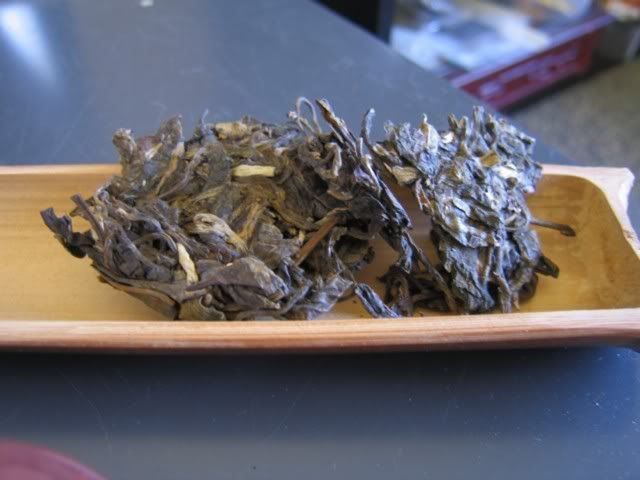
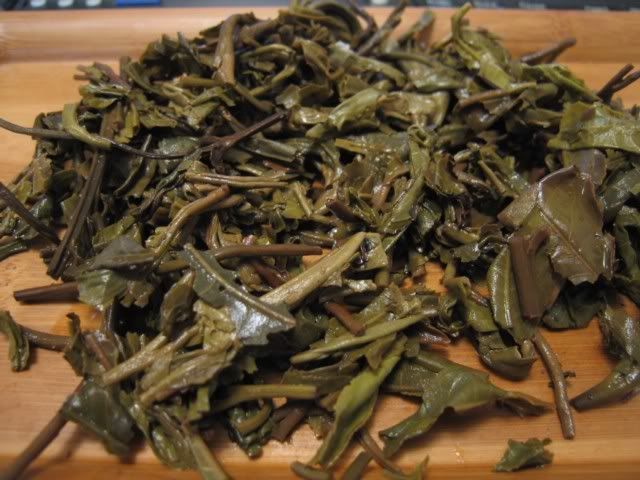
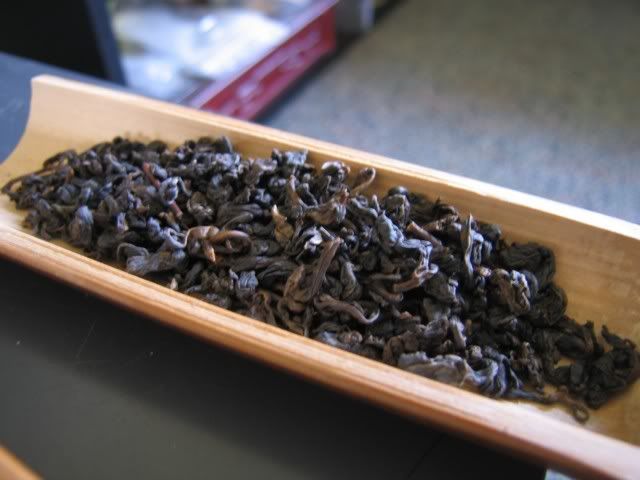
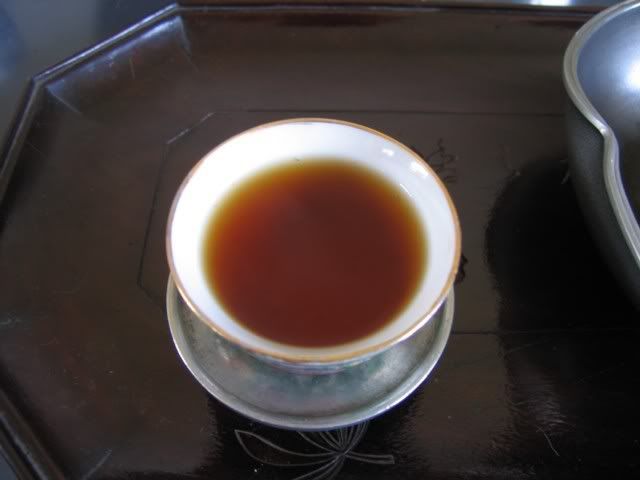
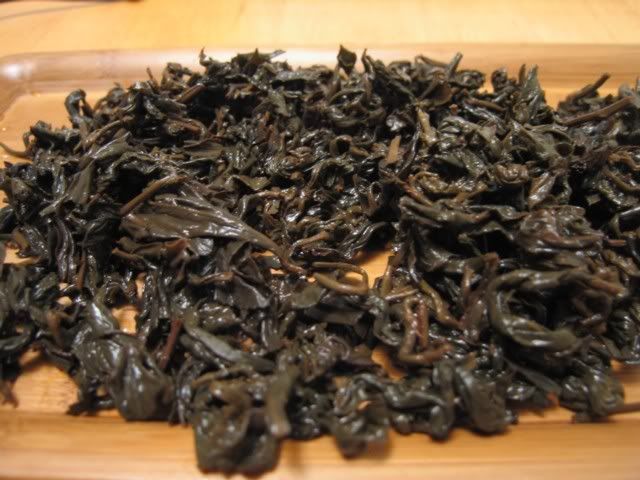



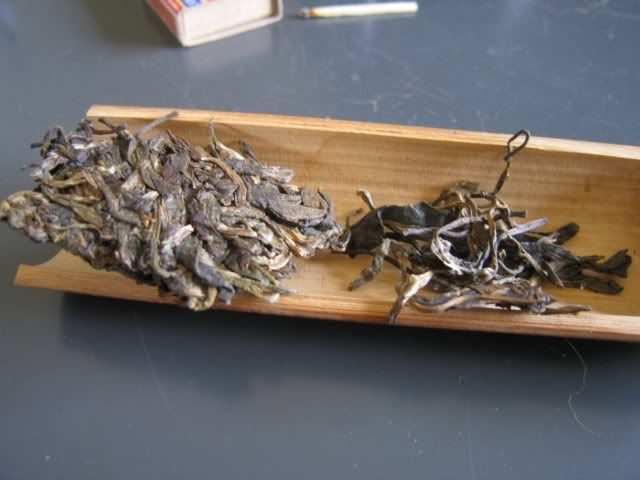


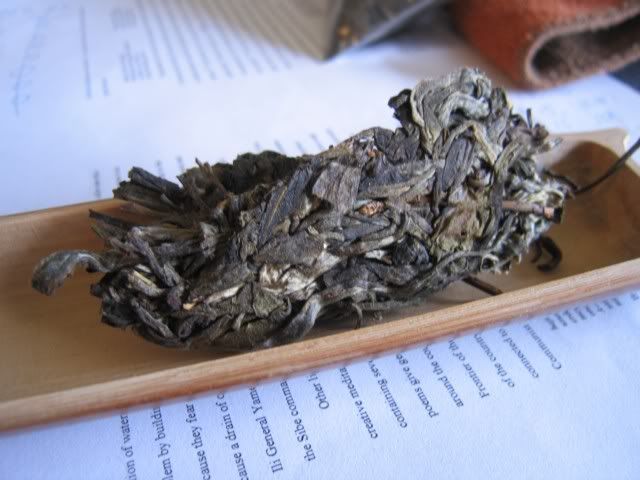


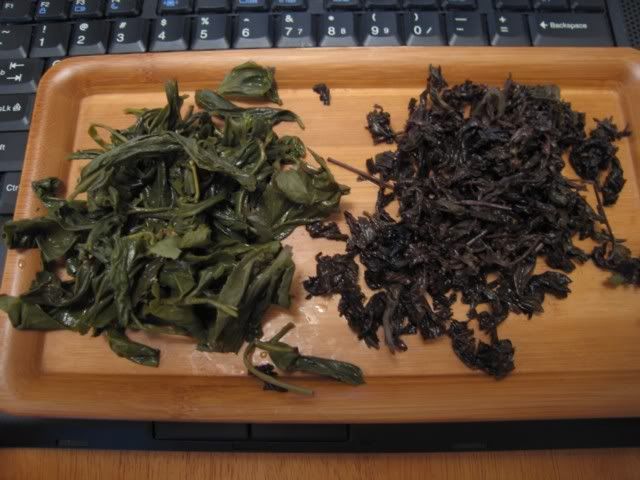
 RSS - Posts
RSS - Posts
Interesting.... would 250C in my oven work?